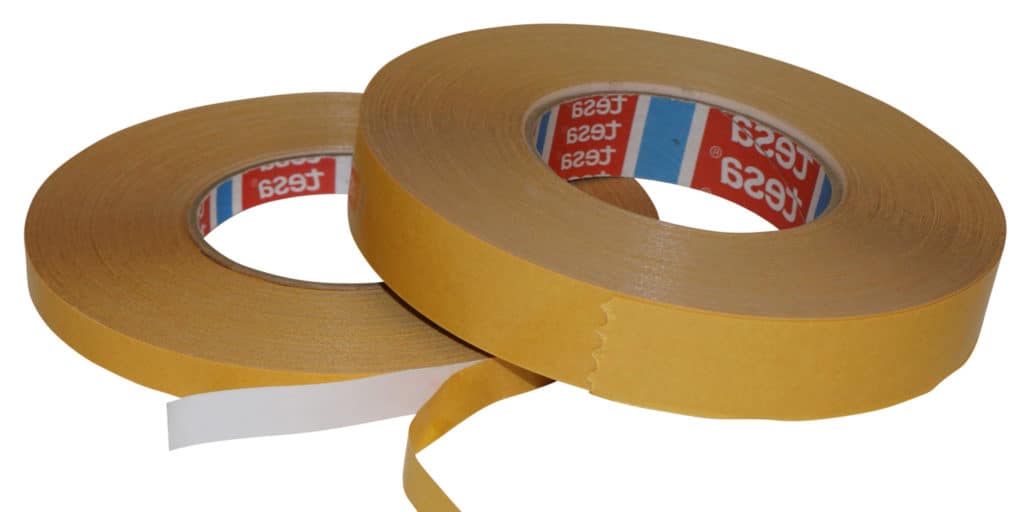Do you want to attach, assemble or connect something? Then you can use double-sided tape for this.
This tape makes attaching, mounting and joining many different materials and objects very easy.
The tape has many different uses. You can read more about this on this page.

In this post we'll cover:
What is double sided tape?
Double-sided tape is tape that sticks on both sides.
This is in contrast to single-sided tape, which has only one side with adhesive, such as painter’s tape.
Double-sided tape often comes on a roll, with a protective non-stick layer over one side. The other side rolls over that layer, so you can easily remove the tape from the roll.
You can also buy double-sided adhesive strips, such as these from
Because double-sided tape sticks to both sides, it is ideal for attaching, mounting and connecting different types of materials and objects.
The tape is used by consumers, but also by professionals and even in industry.
Different types of double-sided tape
If you are looking for double-sided tape, you will soon notice that there are different types.
You have the following double-sided tapes:
- Transparent tape (for attaching things invisibly)
- Extra strong tape (for mounting heavier materials)
- Foam tape (for distance between the surface and the material you stick on it)
- Reusable tape (that you can use again and again)
- Tape patches or strips (small pieces of double-sided tape that you no longer need to cut)
- Water-resistant outdoor tape (for outdoor projects)
The applications of double-sided tape
Double sided tape has many uses. For example, you can use this tape to:
- to fix a mirror on the wall
- to temporarily put carpet on the floor
- securing carpet on the stairs during a staircase renovation
- hang a painting without making holes in the wall
- to hang a poster or pictures
You can use the tape to fix, mount or connect objects both temporarily and permanently.
You can also temporarily fix something with it, before attaching it permanently. For example, it can hold wooden plates in place before you fasten them with screws.
And do you buy a strong double-sided tape? Then you can even attach, mount or connect heavier objects with it.
Think of heavy mirrors, appliances and even facade elements.
Sometimes double-sided tape is a little too strong. Have you attached something with double-sided tape and do you want to remove it again?
The benefits of double-sided tape
A big advantage of double-sided tape is the fact that this tape is very easy to use.
For example, do you want to hang a mirror with the tape? Then remove the adhesive edge from the tape, attach the tape to the mirror and remove the second adhesive edge.
Now all you have to do is press the mirror onto the wall until it’s firmly in place.
In addition, the use of double-sided tape leaves no traces.
If you hang a photo frame on the wall with double-sided tape, you don’t have to hammer or drill a hole. You can’t even see the tape.
If you remove the photo frame again, you will not see this either. The wall still looks neat.
Finally, double-sided tape is inexpensive to purchase. Even the best double-sided tape has a low price.
One of my favorite double-sided tapes is TESA tape, especially the extra strong mounting tape you find here.
Even if you use the tape for many different applications and go through a roll in no time, the total investment in the handy tape is not large.
Another handy thing to have at home for DIY projects: cover foil (read all about it here)
I'm Joost Nusselder, the founder of Tools Doctor, content marketer, and dad. I love trying out new equipment, and together with my team I've been creating in-depth blog articles since 2016 to help loyal readers with tools & crafting tips.

